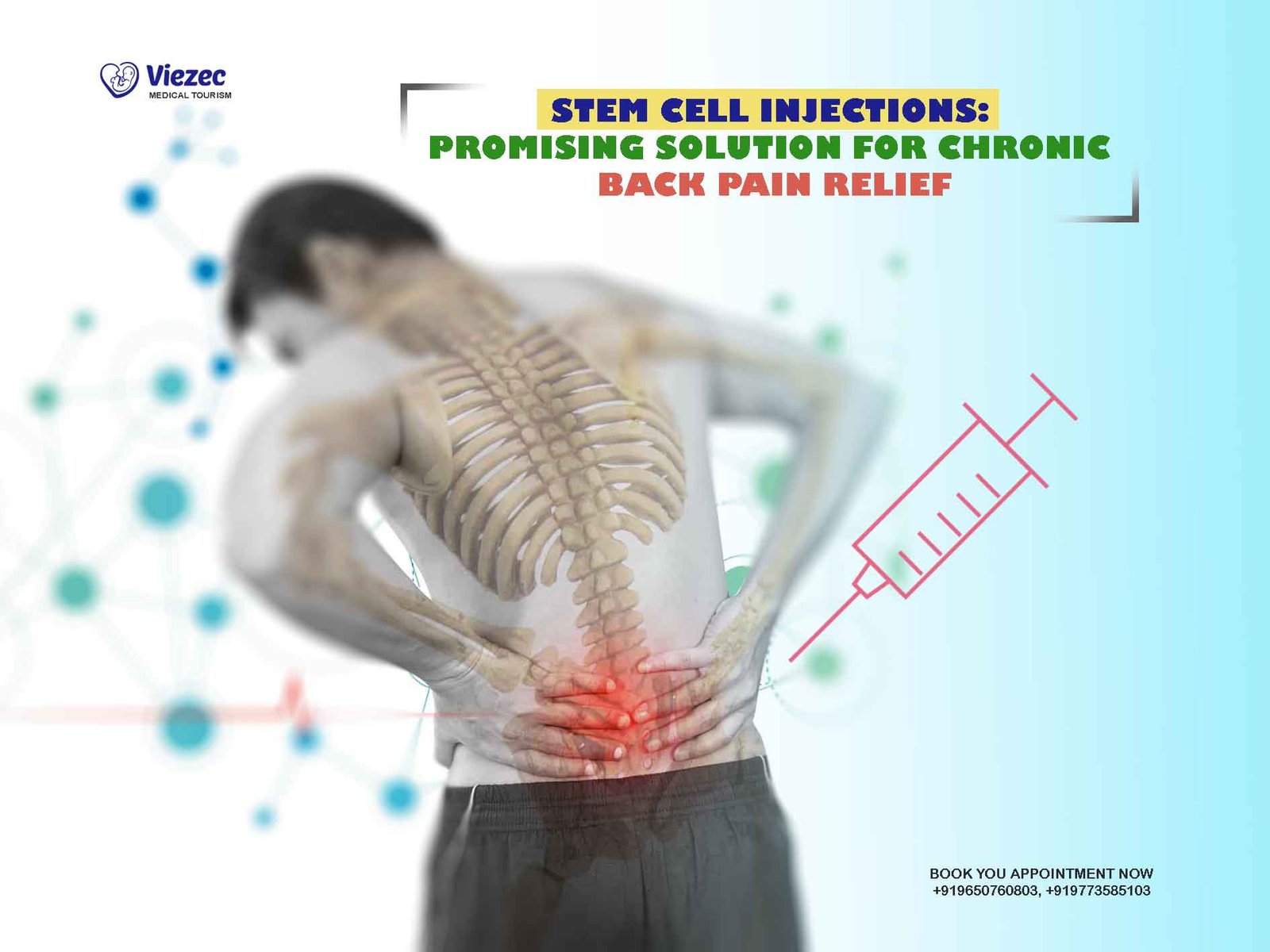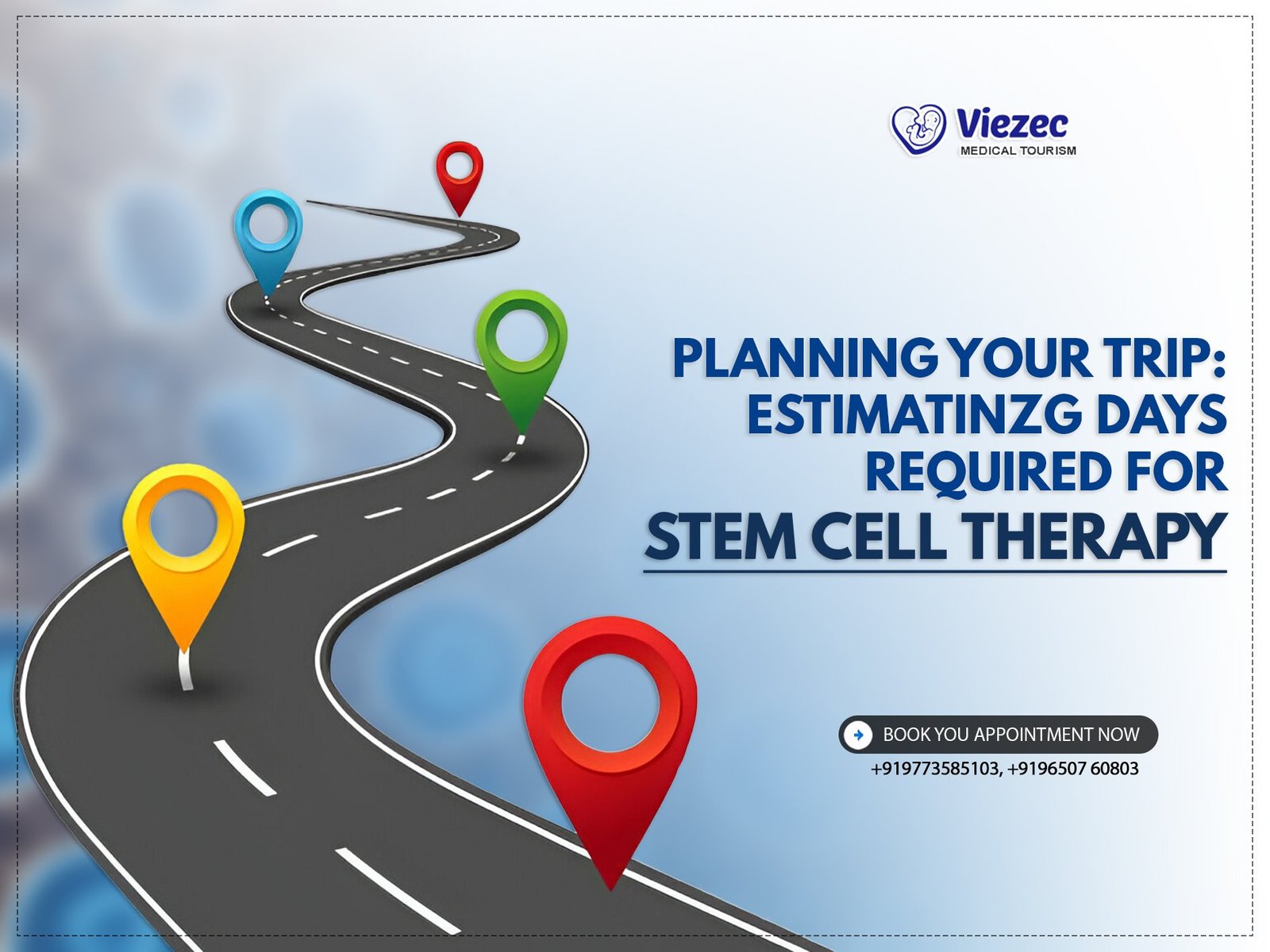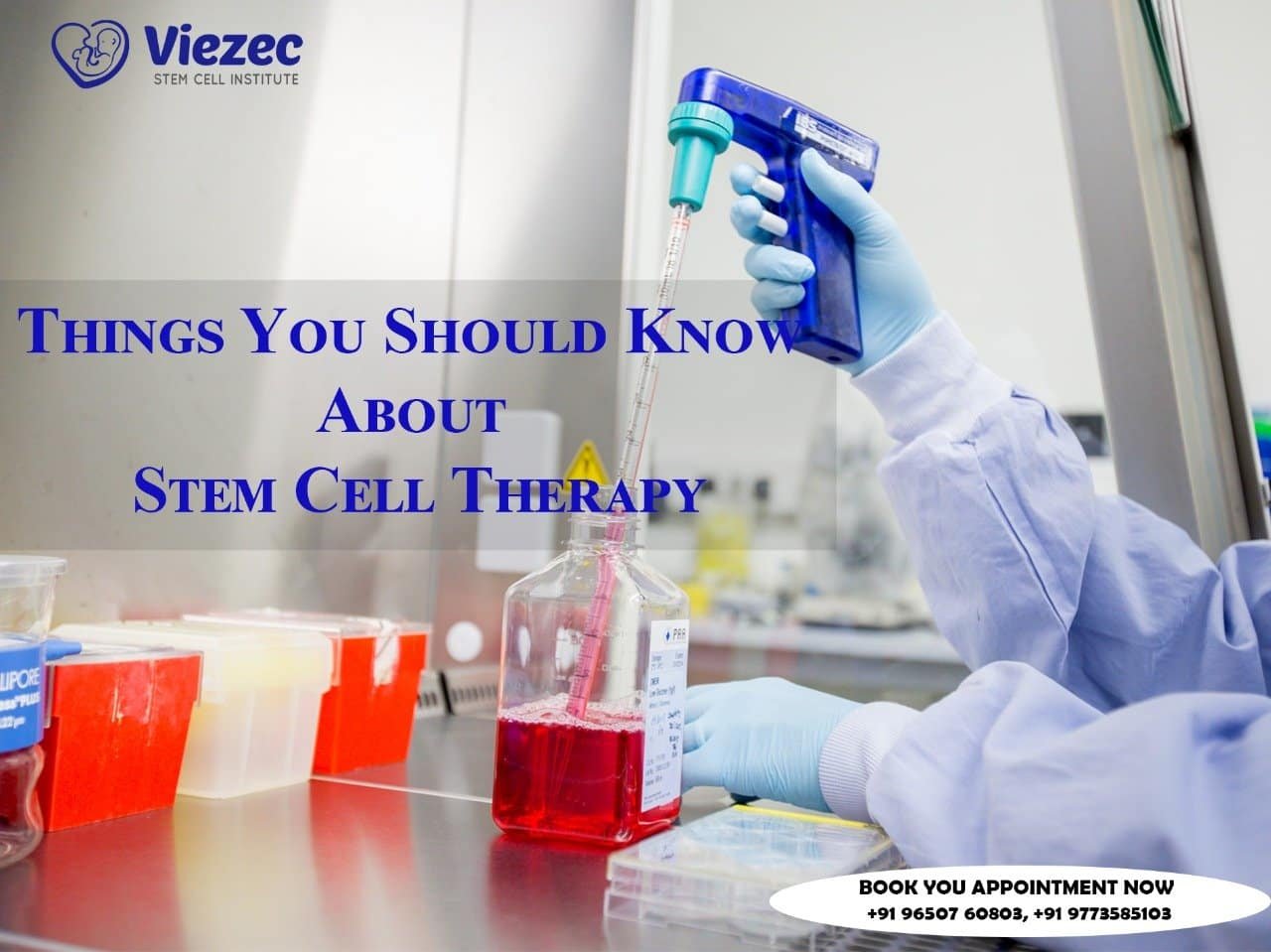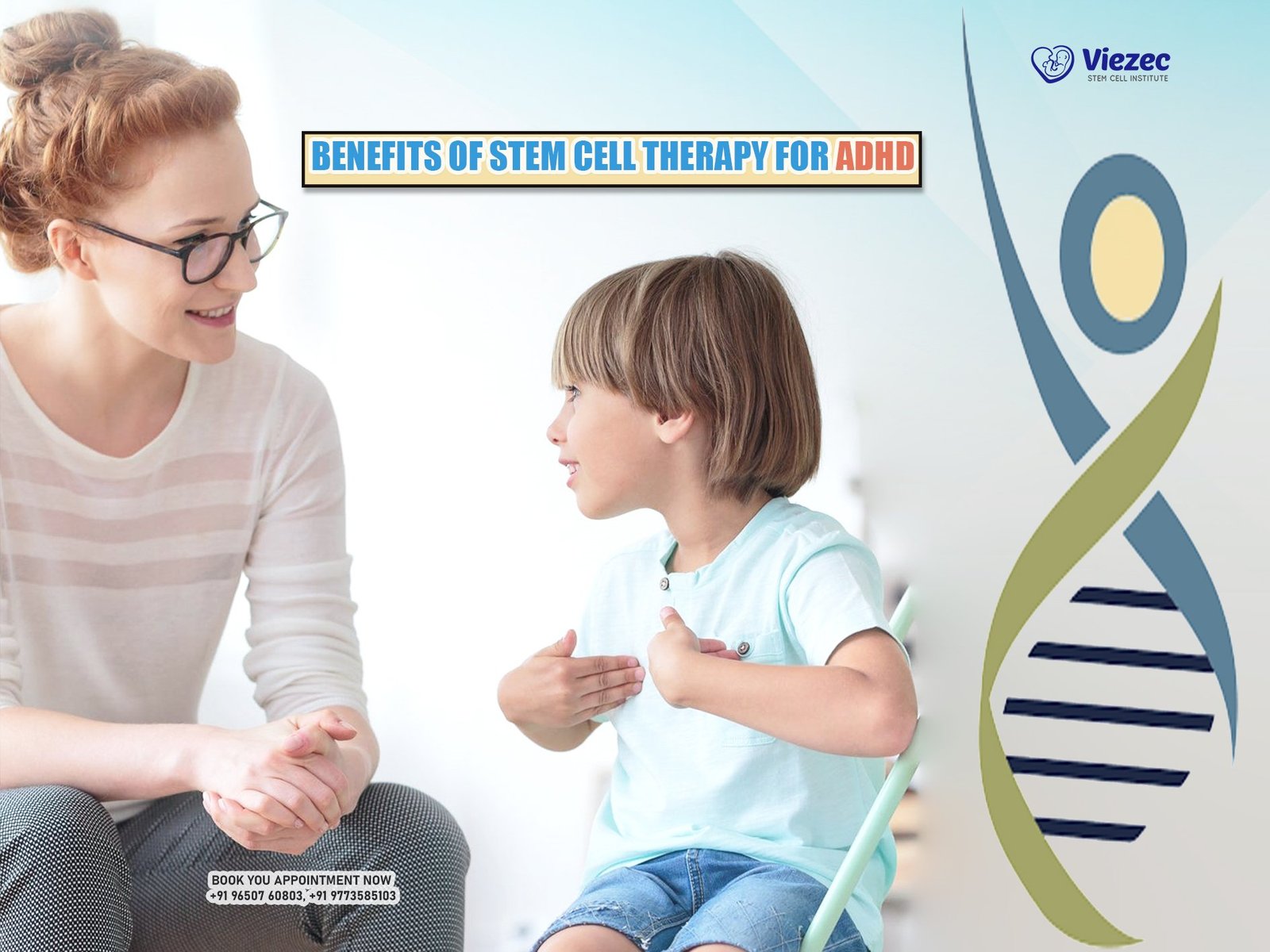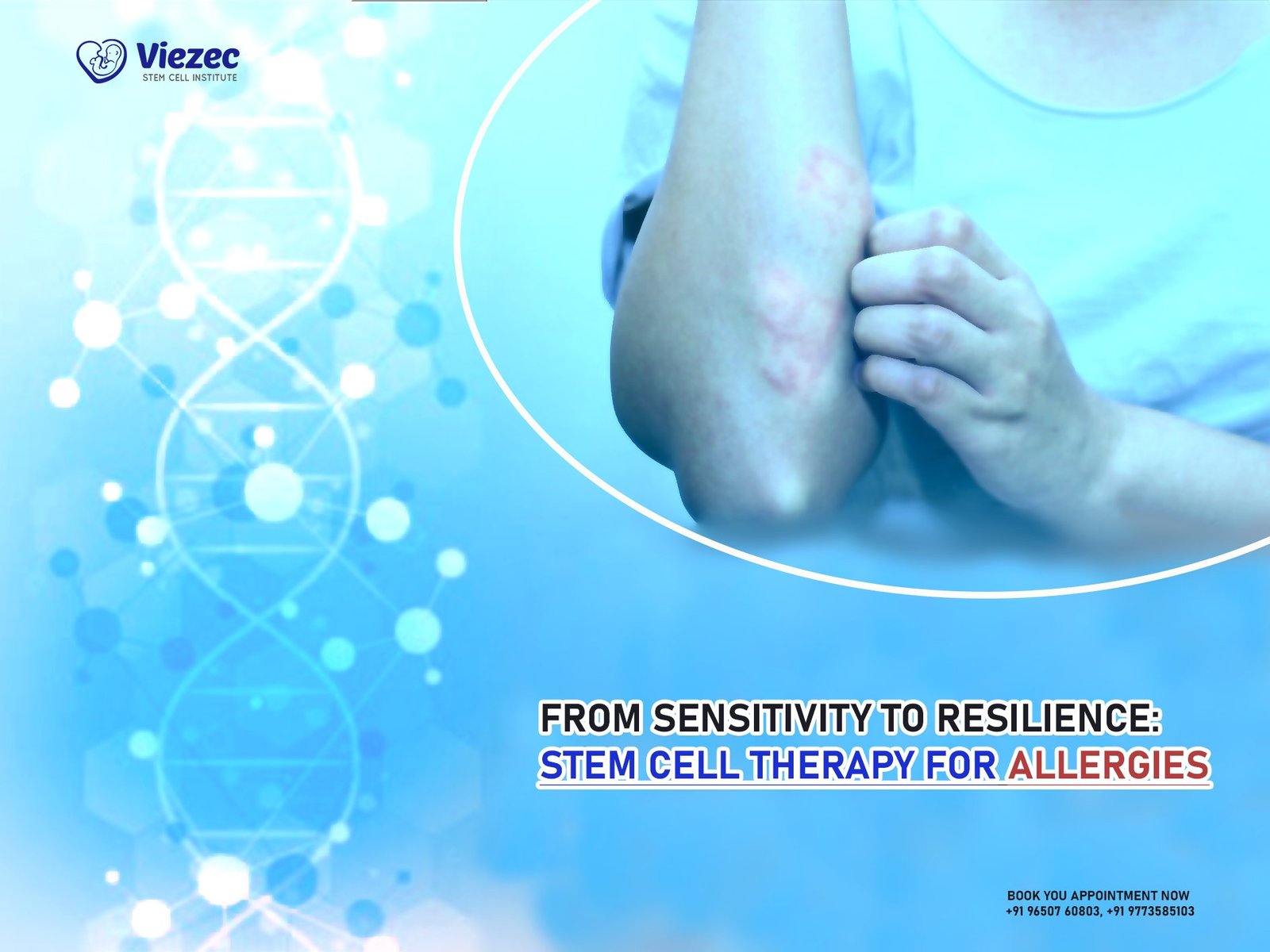Back pain is one of the most common health issues globally, affecting millions of people regardless of age or occupation. From sedentary office workers to manual laborers, no one is immune to its reach. The causes of chronic back pain are wide-ranging, including degenerative disc disease, herniated discs, spinal arthritis, muscle strain, and poor posture. Many sufferers rely on painkillers or steroid injections, which offer only temporary relief and come with side effects. Some even undergo invasive surgeries with no guarantee of long-term success. This frustrating reality has led both doctors and patients to seek alternatives. Stem cell therapy is emerging as a promising solution that goes beyond symptom relief to address the root cause of pain.
What Is Stem Cell Therapy for Back Pain?
Stem cell therapy is a cutting-edge, minimally invasive treatment that harnesses the body’s natural ability to heal itself. In the context of back pain, this therapy involves extracting stem cells—usually from the patient’s bone marrow or adipose (fat) tissue—and injecting them into the damaged or degenerated spinal region. These stem cells have regenerative properties, meaning they can develop into various types of cells needed to repair tissues. By promoting tissue regeneration, reducing inflammation, and improving blood flow, stem cell therapy aims to restore spinal function and reduce pain. It is especially appealing for those seeking to avoid surgery or long-term medication dependence, offering a more holistic and long-lasting solution to back pain.
How Stem Cells Work to Heal the Spine
Stem cells—especially mesenchymal stem cells (MSCs)—are prized in regenerative medicine for their ability to repair, restore, and renew damaged tissues. Once these cells are carefully injected into the damaged area of the spine, they become biologically active. They begin to release vital substances like:
-
Growth factors that stimulate cell regeneration
-
Anti-inflammatory cytokines that reduce pain and swelling
-
Signaling molecules that attract the body’s healing agents
These biological compounds activate the body’s natural repair mechanisms, encouraging the formation of new, healthy tissues in place of damaged or deteriorated ones. Stem cells don’t just mask symptoms—they actually initiate structural repair at the root cause of the problem.
Structural Benefits for Spinal Discs and Nerve Relief
One of the biggest advantages of stem cell therapy is its ability to improve disc hydration and elasticity. Intervertebral discs act like cushions between the spinal vertebrae, and when they dry out or collapse, pain and stiffness increase significantly.
Here’s how stem cells help:
-
Regenerate cartilage and disc tissue to improve cushioning
-
Restore hydration, which enhances disc height and flexibility
-
Reduce inflammation, relieving pressure on surrounding nerves
-
Help decompress spinal nerves, which may ease radiating pain from conditions like sciatica
Unlike temporary solutions such as steroid injections or painkillers, stem cell therapy supports long-term spinal stability and health by healing the actual tissues involved in back pain. It’s a proactive, science-backed approach to restoring comfort and mobility.
Conditions Treated with Stem Cell Therapy
Stem cell therapy has emerged as a powerful tool in regenerative medicine, especially for individuals suffering from chronic back conditions that don’t respond well to traditional approaches. What sets stem cell therapy apart is its ability to target the underlying cause of pain—tissue damage and degeneration—rather than just suppressing symptoms. Many spinal conditions arise from inflammation, disc dehydration, or joint instability, and stem cells help address these issues at the cellular level.
Here are some of the most common back conditions treated with stem cell therapy:
- Degenerative Disc Disease (DDD): When intervertebral discs lose their cushioning ability and flexibility, leading to chronic pain.
- Herniated or Bulging Discs: These can press on spinal nerves, causing severe discomfort and mobility issues.
- Spinal Stenosis: A narrowing of the spinal canal that compresses nerves, often leading to pain, numbness, or weakness.
Stem cell therapy also shows potential in managing:
- Facet Joint Syndrome: A condition that causes pain at the joints connecting spinal vertebrae.
- Sciatica: Pain radiating down the leg due to sciatic nerve compression.
- Chronic Lower Back Pain: Especially cases that persist despite medication, rest, or physical therapy.
- Post-surgical Back Pain: For patients who haven’t found relief from previous spinal surgeries.
- Sports-related Spinal Injuries: Especially in athletes aiming for faster recovery without invasive procedures.
Comparing Stem Cell Therapy with Surgery and Pain Medications
Stem cell therapy offers a non-surgical alternative that can provide relief without the risks and downtime associated with back surgery. Surgical interventions, such as spinal fusion or discectomy, often require weeks or even months of recovery and may lead to complications like nerve damage or infection. Pain medications, while convenient, only mask the symptoms and often come with the risk of addiction or side effects such as gastrointestinal issues. In contrast, stem cell therapy targets the underlying cause of pain and aims to restore function rather than merely provide temporary relief. It is less invasive, has a shorter recovery time, and promotes natural healing.
Procedure: What to Expect During Stem Cell Treatment
Embarking on stem cell therapy for back pain begins with an initial medical consultation. During this session, your doctor will conduct a thorough evaluation, including imaging tests like an MRI or CT scan, to pinpoint the cause and location of spinal damage. This step is crucial for tailoring the treatment plan to your unique condition.
Step-by-Step Overview of the Procedure:
- Stem Cell Harvesting: Stem cells are typically collected from the patient’s bone marrow (often from the pelvic bone) or fat tissue under local anesthesia. This step is quick, minimally invasive, and performed in a sterile environment.
- Cell Processing: The extracted cells are then processed in a specialized lab to isolate and concentrate the regenerative stem cells, ensuring high potency.
Injection and Recovery: What Happens Next?
Once prepared, the concentrated stem cells are re-injected into the affected spinal region using advanced image-guided technology like fluoroscopy or ultrasound. This ensures pinpoint accuracy for maximum effectiveness. The entire procedure typically takes a few hours and is performed on an outpatient basis.
Post-Treatment Recovery:
- Same-Day Discharge: Most patients return home the same day.
- Minimal Downtime: Light activities can usually be resumed within a few days.
- Follow-Up Care: You will likely have follow-up appointments to track progress and optimize results.
This two-part process is designed to not only relieve pain but also to promote healing and restore spinal health naturally—without the risks of invasive surgery.
Success Rate of Stem Cell Therapy for Back Pain
Numerous clinical studies and patient testimonials indicate encouraging success rates for stem cell therapy in treating back pain. Reports suggest that anywhere from 60% to 85% of patients experience significant improvement in pain levels and mobility within six months of treatment. In a study published in the journal Stem Cells International, patients with lumbar disc degeneration showed lasting improvements for up to two years. Factors influencing success include the patient’s age, the severity of the condition, overall health, and adherence to post-treatment guidelines. While results may vary, the growing body of evidence supports stem cell therapy as a viable, long-term solution for many back pain sufferers.
Risks, Side Effects, and Safety Considerations
Like any medical procedure, stem cell therapy for back pain carries some risks, although they are generally minimal. Common side effects include temporary soreness, swelling, or bruising at the injection site. In rare cases, there may be an infection, nerve irritation, or bleeding. However, because the treatment often uses autologous cells (cells derived from the patient’s own body), the risks of rejection or allergic reactions are significantly reduced. It is essential to seek treatment from a reputable clinic that adheres to FDA-approved protocols and uses advanced imaging for accurate injections. Always consult with a qualified healthcare provider to determine if you’re a good candidate.
Cost of Stem Cell Therapy for Back Pain
The cost of stem cell therapy for back pain can vary widely depending on factors like location, physician expertise, clinic reputation, and the complexity of the procedure. In the United States, the treatment typically ranges between $5,000 and $10,000. Since it is considered an experimental or elective procedure, most insurance plans do not cover it. However, some clinics offer financing options or bundled packages for multiple sessions. When compared to the cumulative cost of medications, physical therapy, and potential surgeries, many patients view stem cell therapy as a cost-effective investment in long-term wellness and mobility.
Is Stem Cell Therapy Right for You?
Determining whether you are a good candidate for stem cell therapy requires a thorough medical evaluation. Ideal candidates include those who have chronic back pain not relieved by conventional methods, such as physical therapy, medications, or injections. Patients with early to moderate disc degeneration, who wish to avoid surgery, and are generally in good health, are more likely to benefit. On the other hand, individuals with severe spinal deformities, cancer, or active infections may not qualify. A detailed consultation with a regenerative medicine specialist and diagnostic imaging can help tailor a treatment plan suited to your unique condition and health profile.
Real Patient Stories: Testimonials That Inspire Hope
Many patients who have undergone stem cell therapy for back pain report transformative experiences. Stories often include a return to normal activities, such as exercising, working without discomfort, or even avoiding major surgery. For example, a 45-year-old construction worker who was facing spinal fusion found relief through stem cell therapy and returned to work within weeks. Similarly, athletes with chronic disc injuries have used stem cells to recover mobility and performance. These testimonials highlight the potential of regenerative medicine not just to relieve pain, but to restore quality of life. Including verified patient reviews can provide reassurance to others considering this therapy.
Choosing the Right Clinic for Stem Cell Back Treatment
Finding the right stem cell clinic is a crucial step in your journey toward back pain relief. Not all providers offer the same level of expertise, safety, or transparency. A reputable clinic can make the difference between temporary relief and long-lasting recovery. Here are some essential factors to consider:
What to Look for in a Clinic:
- Board-Certified Physicians: Ensure the medical team is qualified and experienced in regenerative medicine.
- FDA-Compliant Practices: The clinic should follow all safety protocols and use approved methods.
- Imaging-Guided Injections: This ensures accurate placement of stem cells for better outcomes.
- In-House Laboratories: Clinics with on-site labs maintain better control over stem cell processing and quality.
- Follow-Up Care: A well-structured aftercare plan is essential for monitoring progress and optimizing recovery.
Review before-and-after images, patient success stories, and independent testimonials. Transparent clinics will gladly share data about their success rates, procedures, and recovery timelines.
Why International Options Like India Are Gaining Popularity
For many patients, the cost of stem cell therapy in the U.S. or Europe can be prohibitive. This has led to a surge in medical tourism, with countries like India becoming top destinations for high-quality yet affordable regenerative treatments.
Why Consider International Clinics?
- Lower Treatment Costs: Save up to 60–70% compared to Western countries
- World-Class Facilities: Equipped with cutting-edge technology and globally trained doctors
- Personalized Care: Clinics often offer tailored treatment plans and one-on-one care
One such reputable provider is Viezec in India. Known for its expertise in regenerative medicine, Viezec offers:
- A team of experienced specialists
- State-of-the-art laboratory and imaging technologies
- Transparent pricing and patient-first policies
Patients from around the world choose Viezec for its commitment to safety, quality, and compassionate care. Whether you’re looking for a cost-effective alternative or simply want the best in global treatment standards, international options like Viezec can deliver impressive results.

